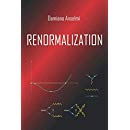Batalin-Vilkovisky formalism
We go on in the program of investigating the removal of divergences of a generical quantum gauge field theory, in the context of the Batalin-Vilkovisky formalism. We extend to open gauge-algebrae a recently formulated algorithm, based on redefinitions $\delta\lambda$ of the parameters $\lambda$ of the classical Lagrangian and canonical transformations, by generalizing a well-known conjecture on the form of the divergent terms. We also show that it is possible to reach a complete control on the effects of the subtraction algorithm on the space $M_{gf}$ of the gauge-fixing parameters. A principal fiber bundle $E \rightarrow M_{gf}$ with a connection $\omega_1$ is defined, such that the canonical transformations are gauge transformations for $\omega_1$. This provides an intuitive geometrical description of the fact the on shell physical amplitudes cannot depend on $M_{gf}$. A geometrical description of the effect of the subtraction algorithm on the space $M_{ph}$ of the physical parameters lambda is also proposed. At the end, the full subtraction algorithm can be described as a series of diffeomorphisms on $M_{ph}$, orthogonal to $M_{gf}$ (under which the action transforms as a scalar), and gauge transformations on $E$. In this geometrical context, a suitable concept of predictivity is formulated. We give some examples of (unphysical) toy models that satisfy this requirement, though being neither power counting renormalizable, nor finite.
Class.Quant.Grav. 12 (1995) 319-350 | DOI: 10.1088/0264-9381/12/2/005
We consider the problem of removing the divergences in an arbitrary gauge-field theory (possibly nonrenormalizable). We show that this can be achieved by performing, order by order in the loop expansion, a redefinition of some parameters (possibly infinitely many) and a canonical transformation (in the sense of Batalin and Vilkovisky) of fields and BRS sources. Gauge-invariance is turned into a suitable quantum generalization of BRS-invariance. We define quantum observables and study their properties. We apply the result to renormalizable gauge-field theories that are gauge-fixed with a nonrenormalizable gauge-fixing and prove that their predictivity is retained. A corollary is that topological field theories are predictive. Analogies and differences with the formalisms of classical and quantum mechanics are pointed out.
Class.Quant.Grav. 11 (1994) 2181-2204 | DOI: 10.1088/0264-9381/11/9/005

 Quantum Gravity
Quantum Gravity 


